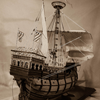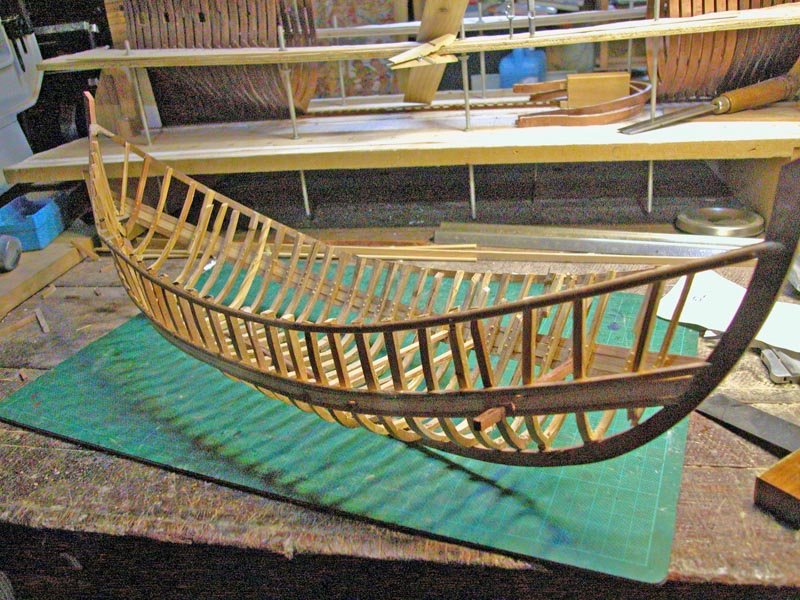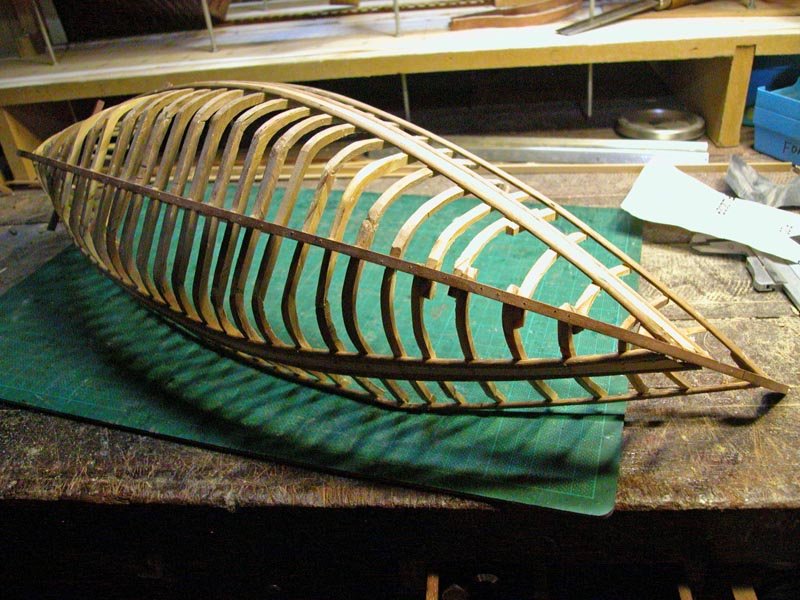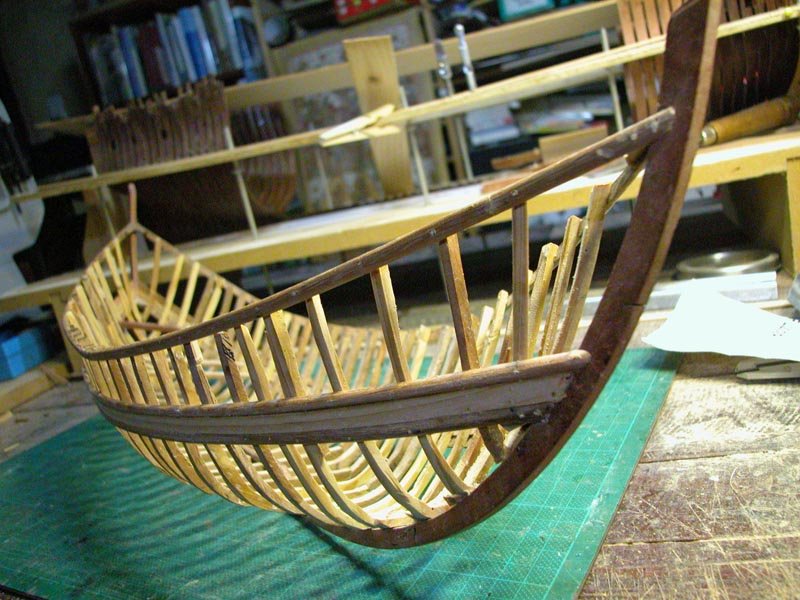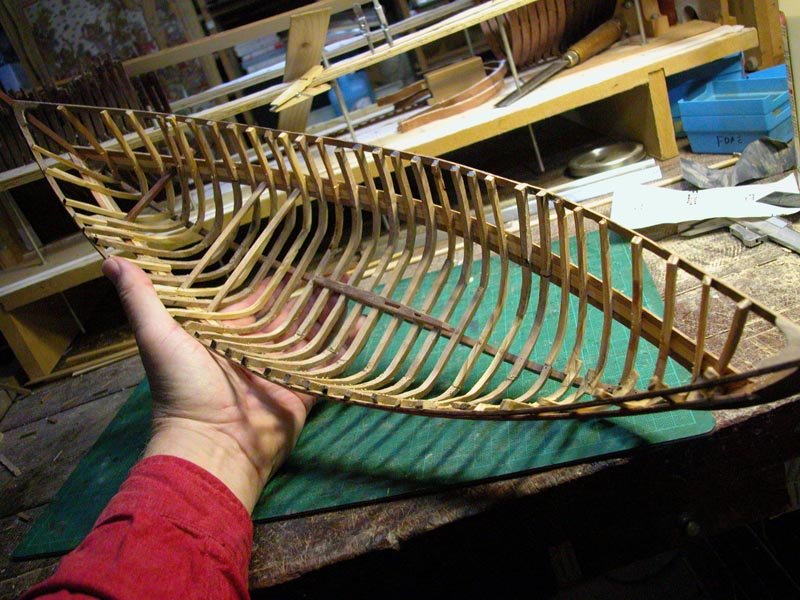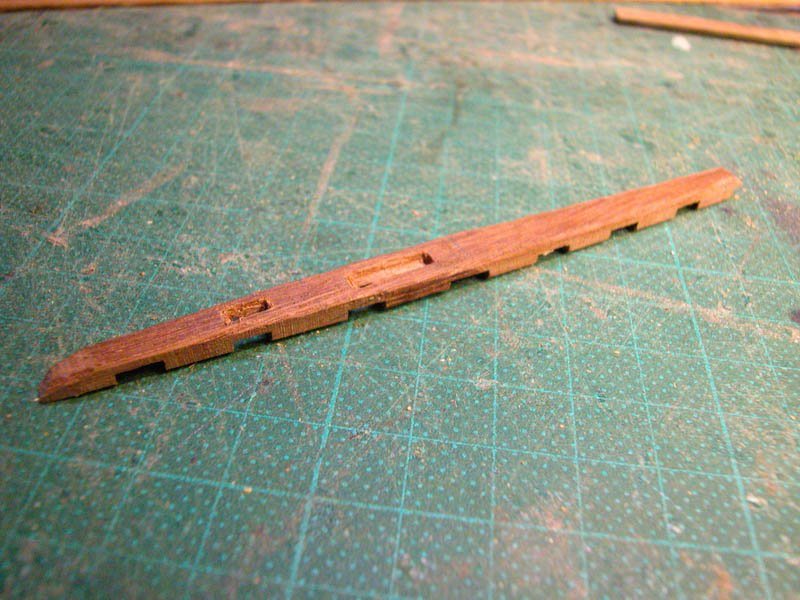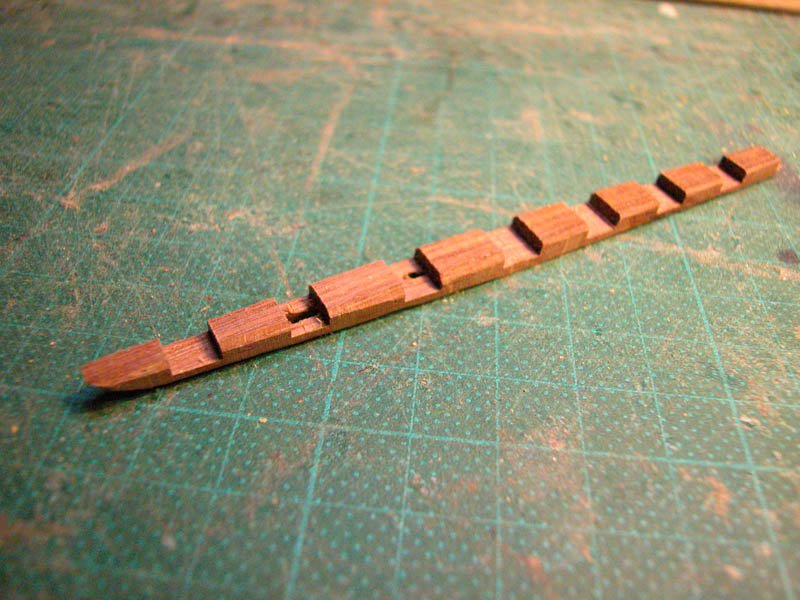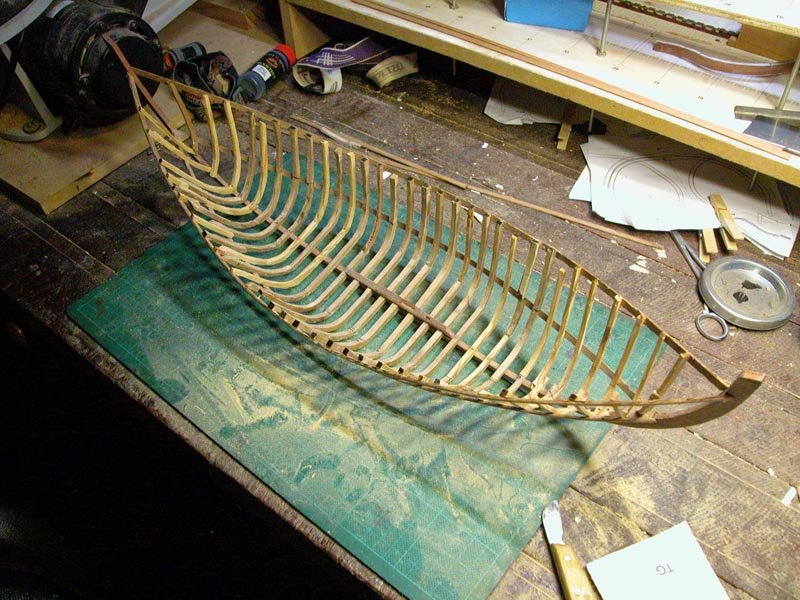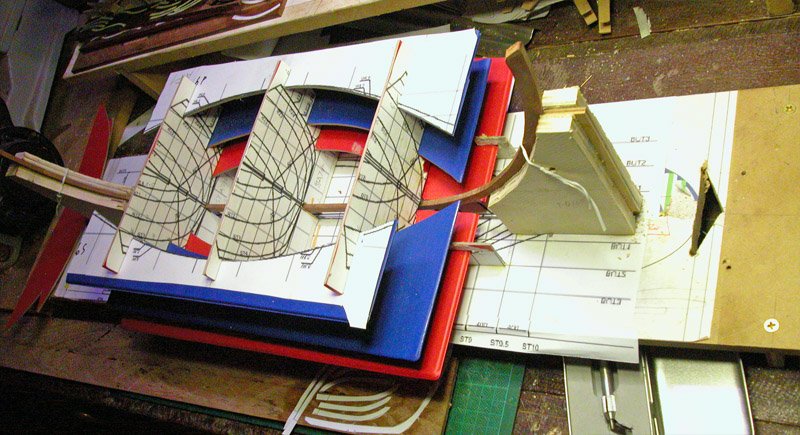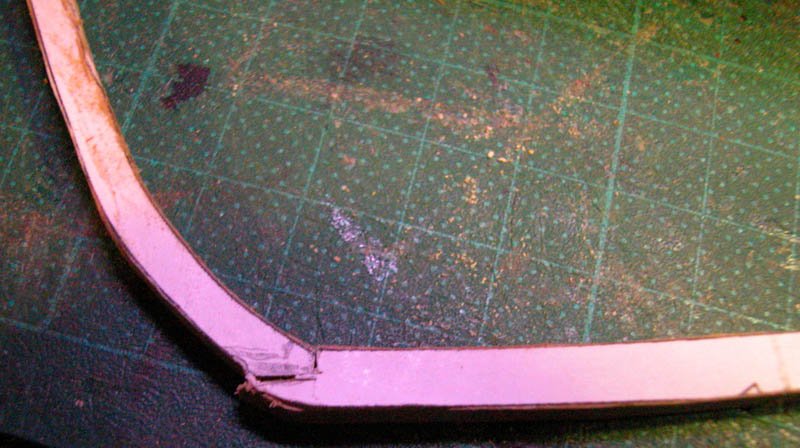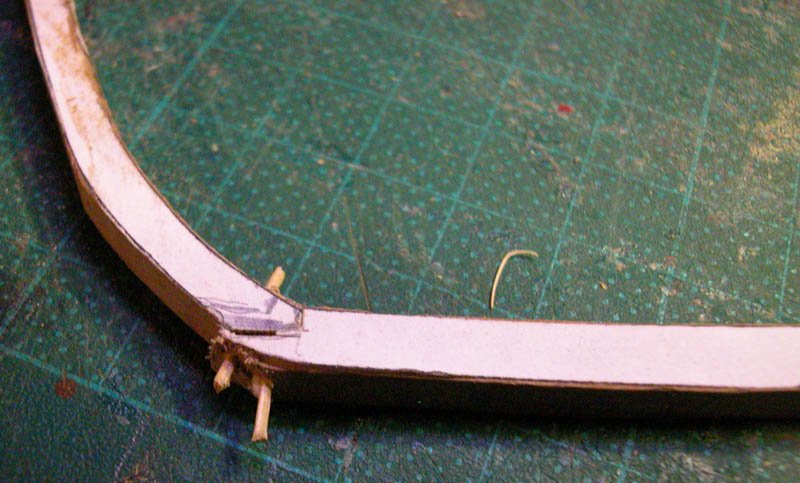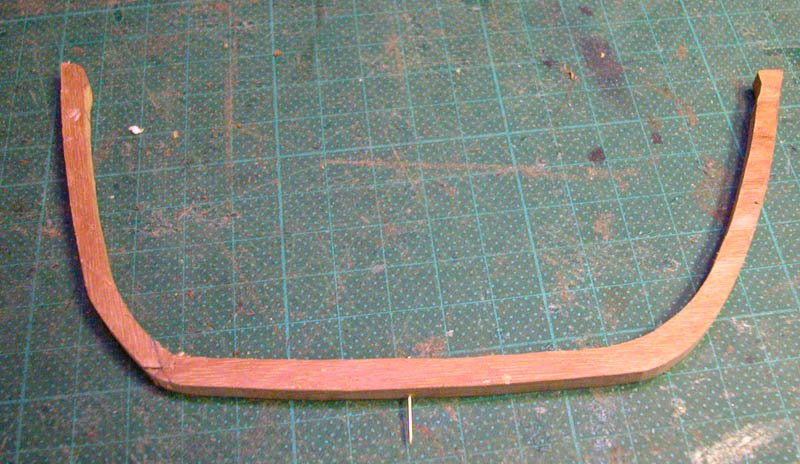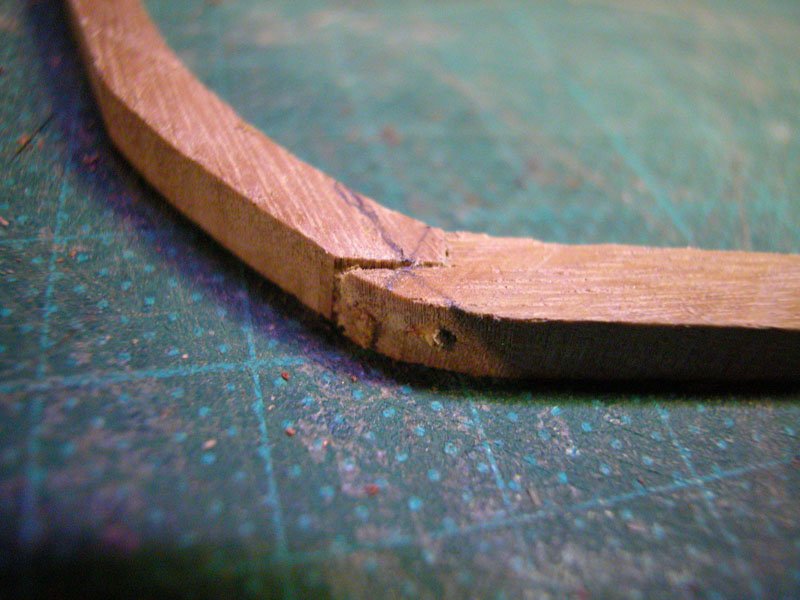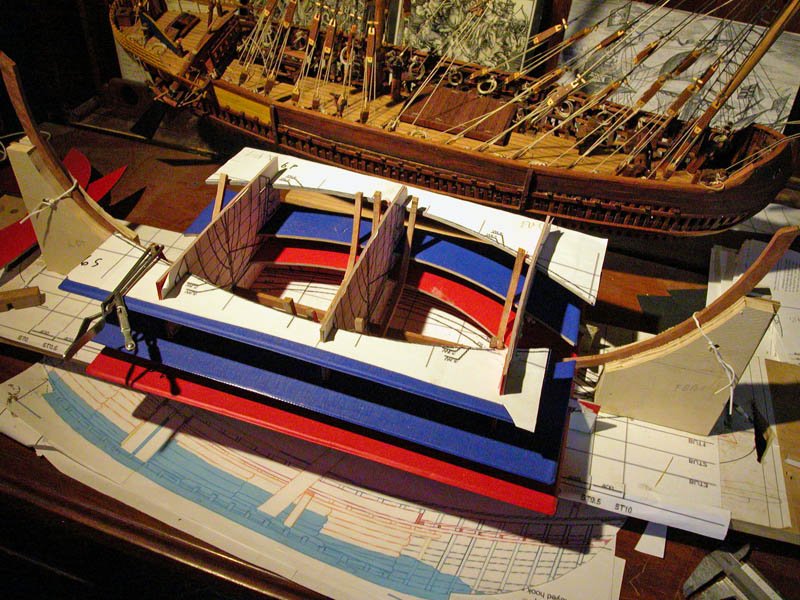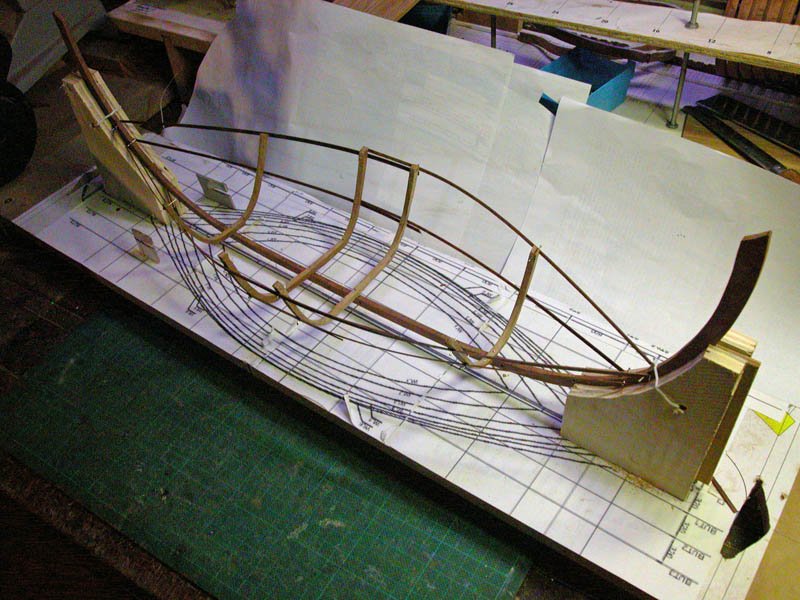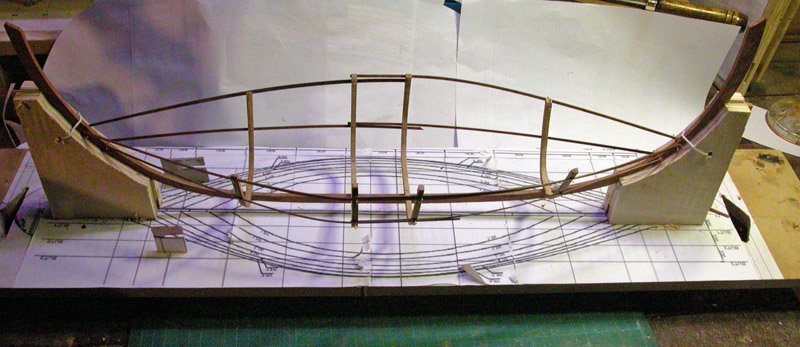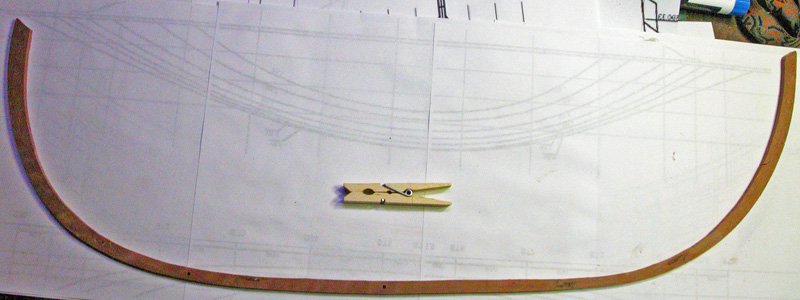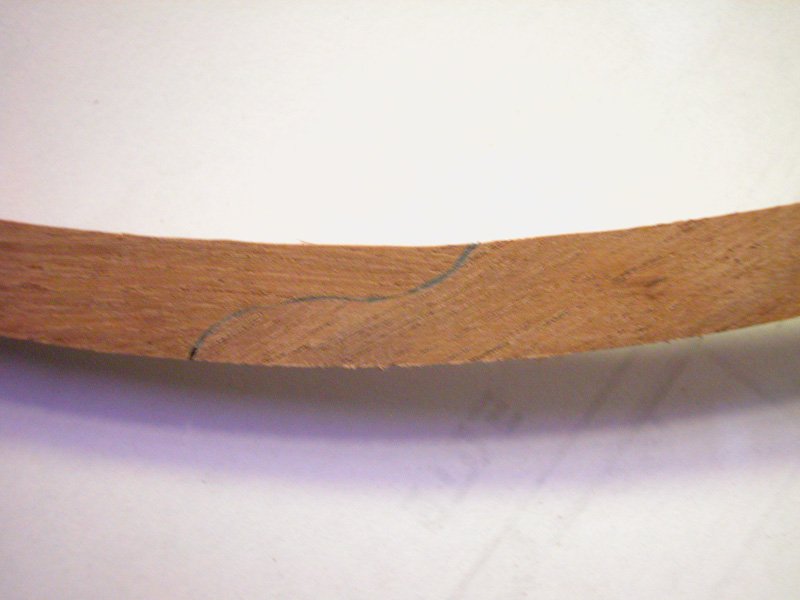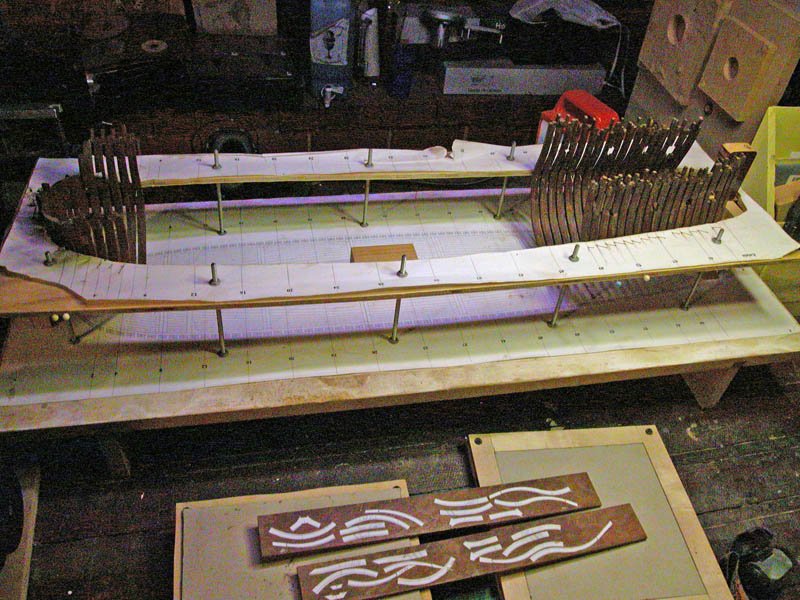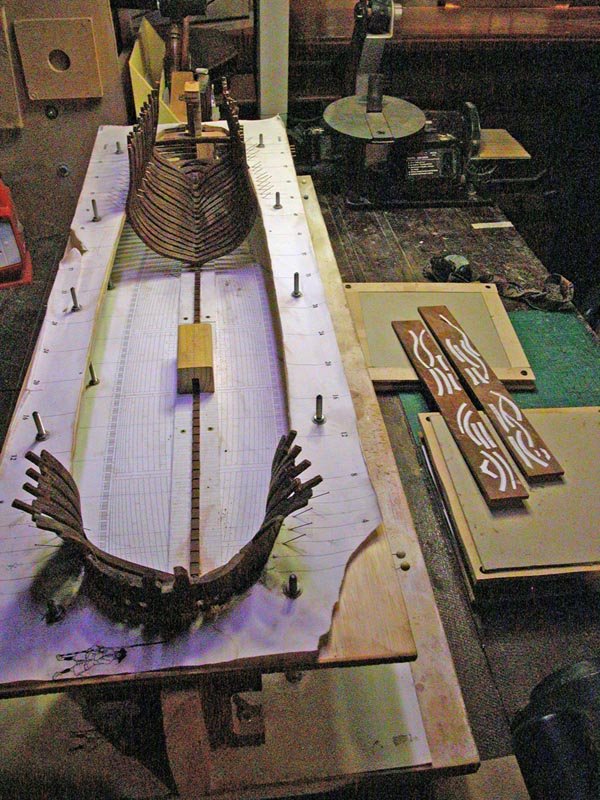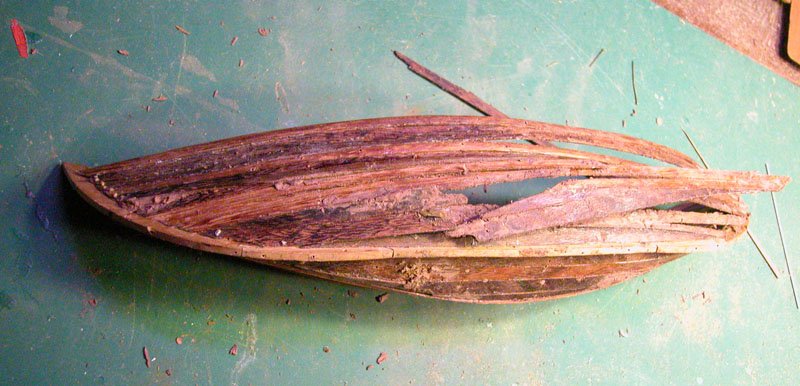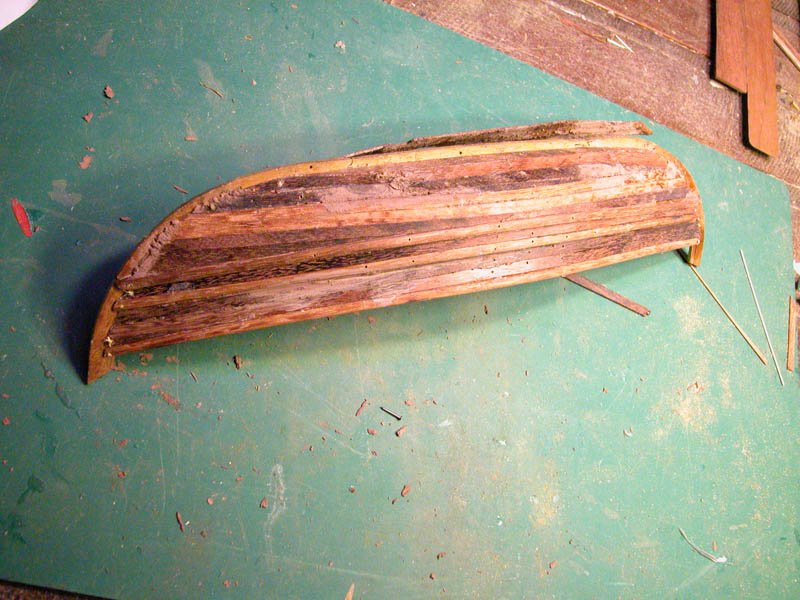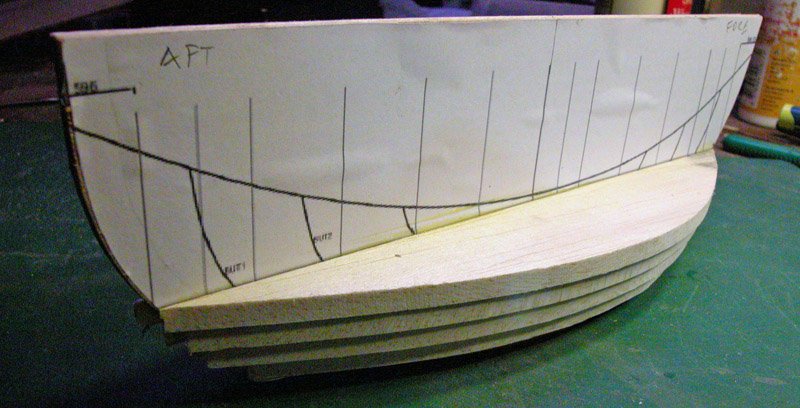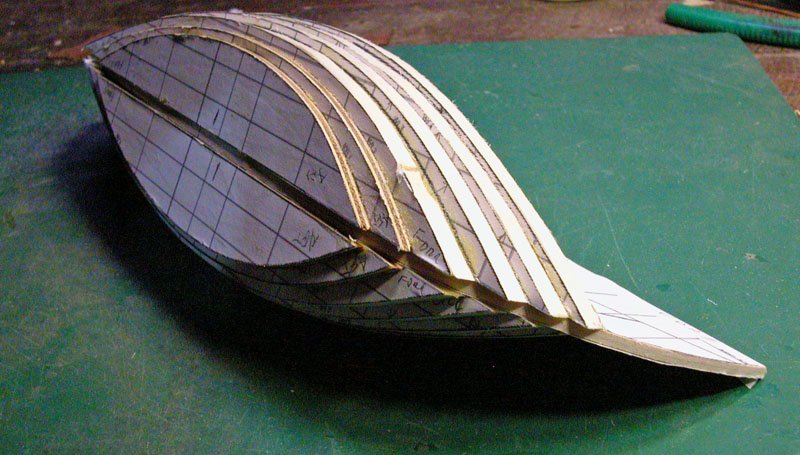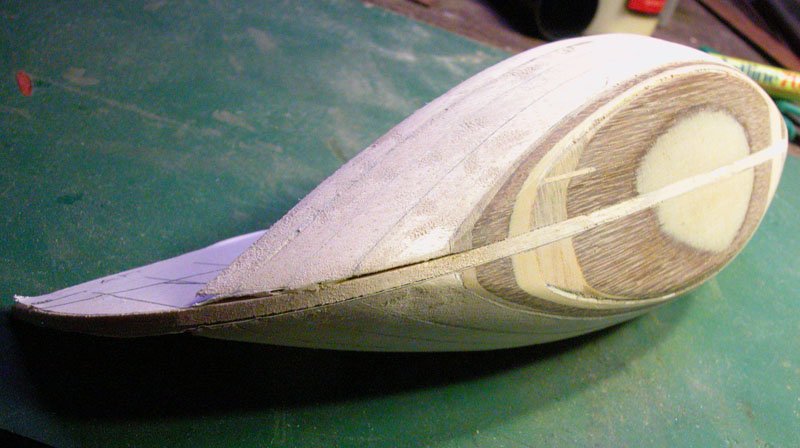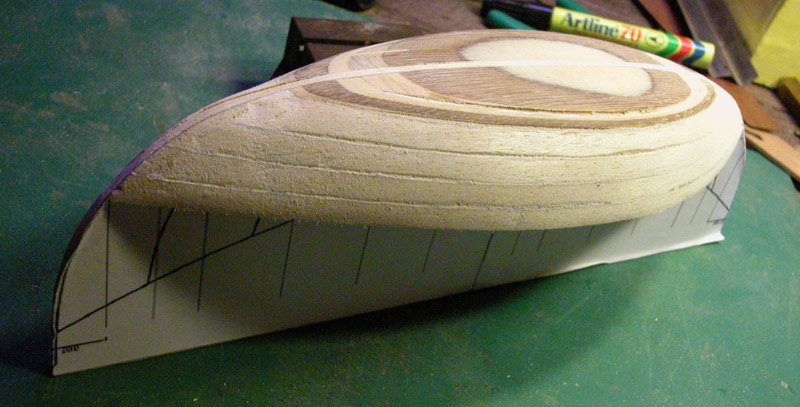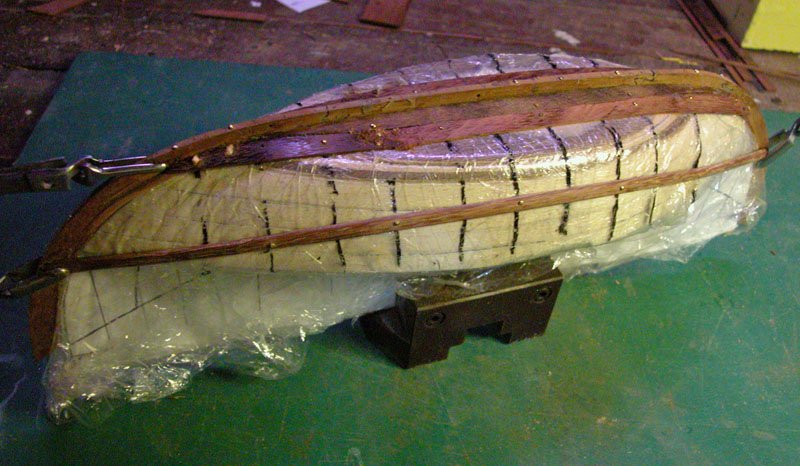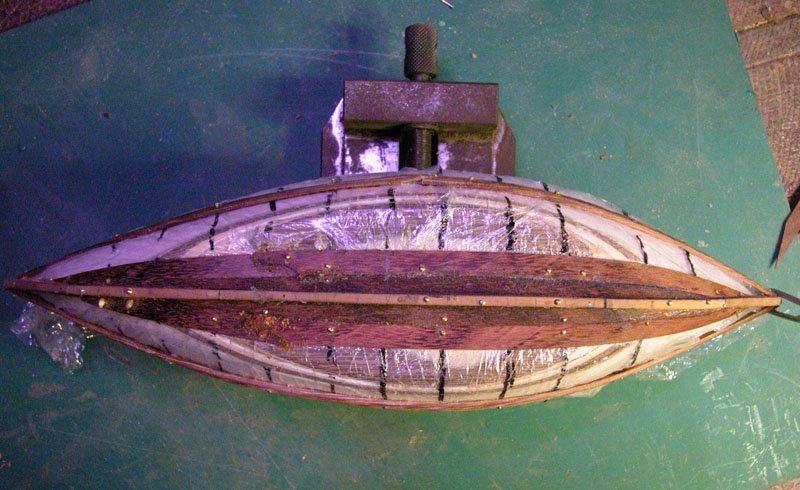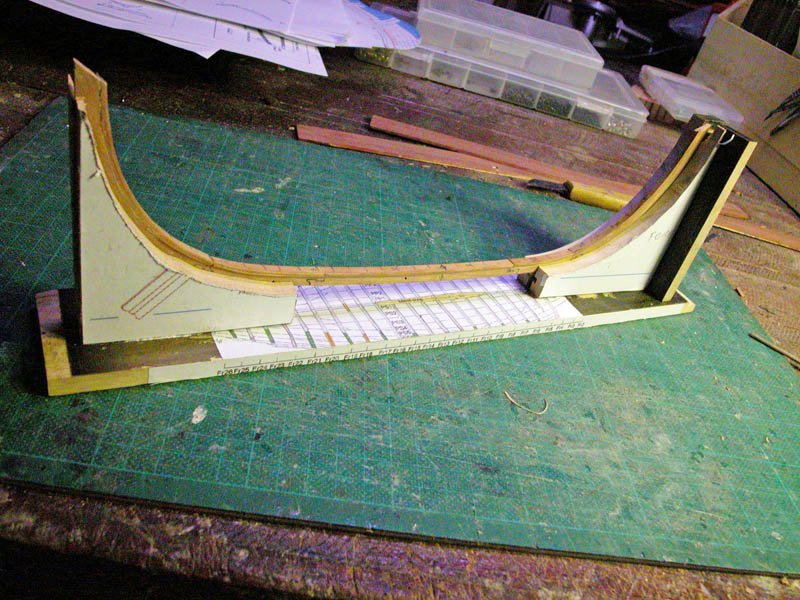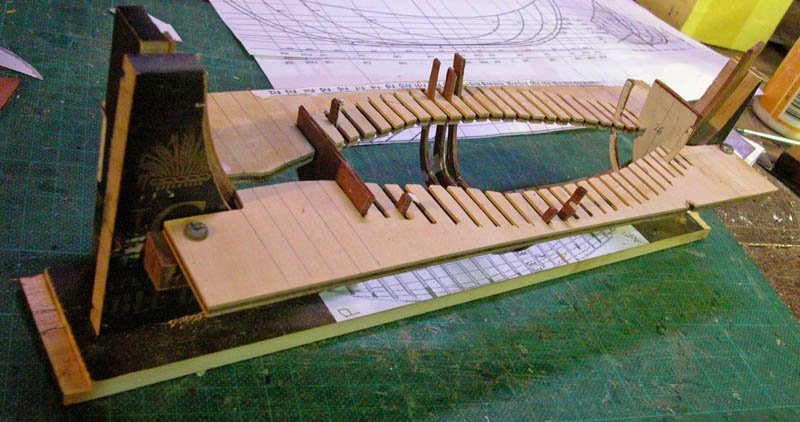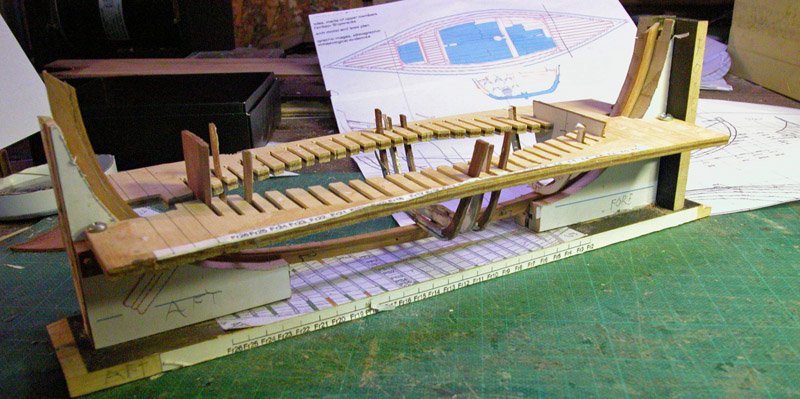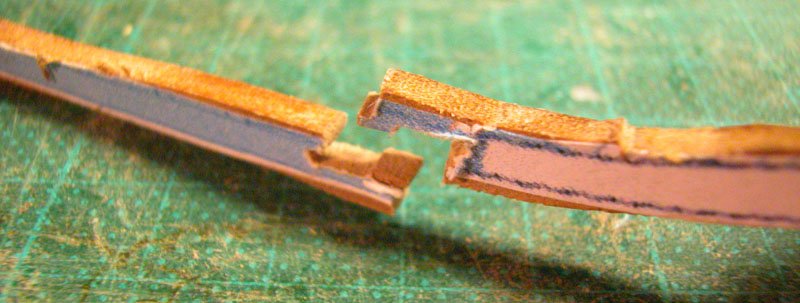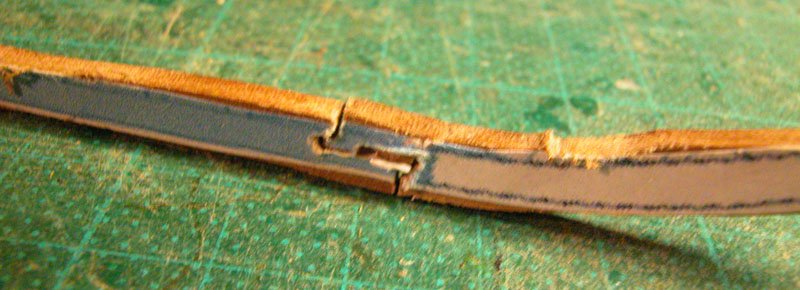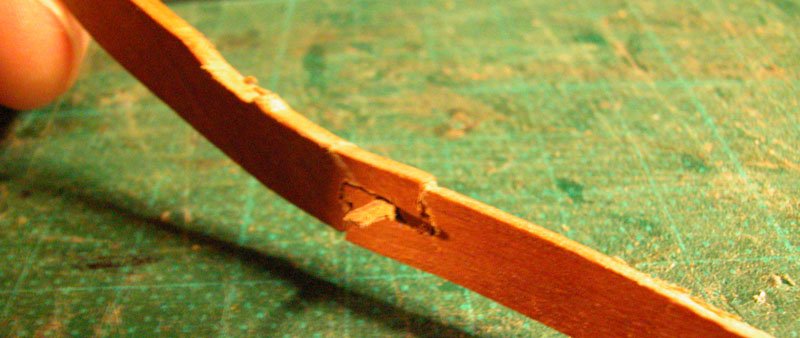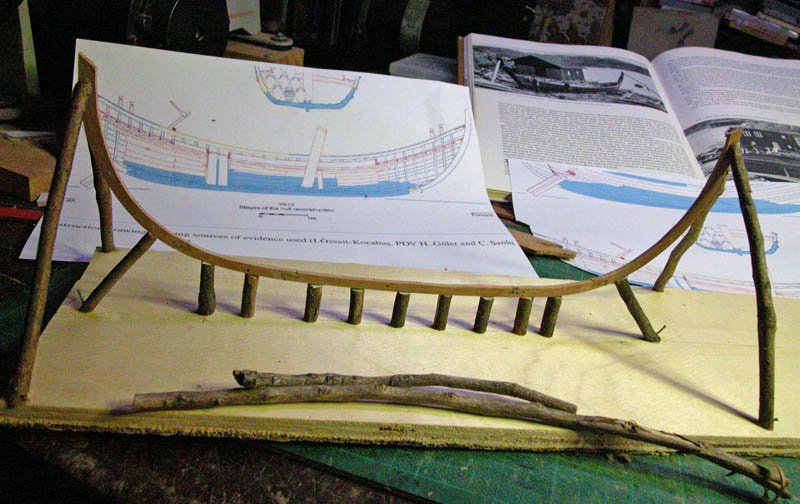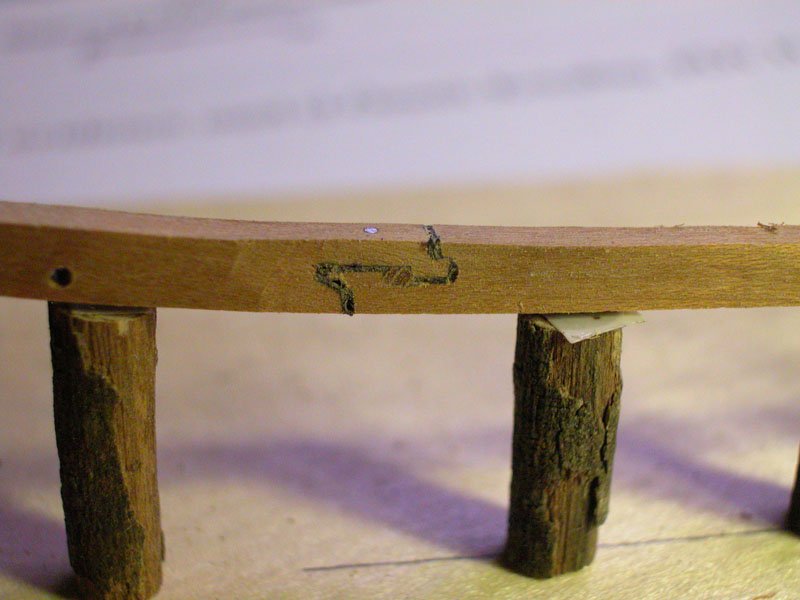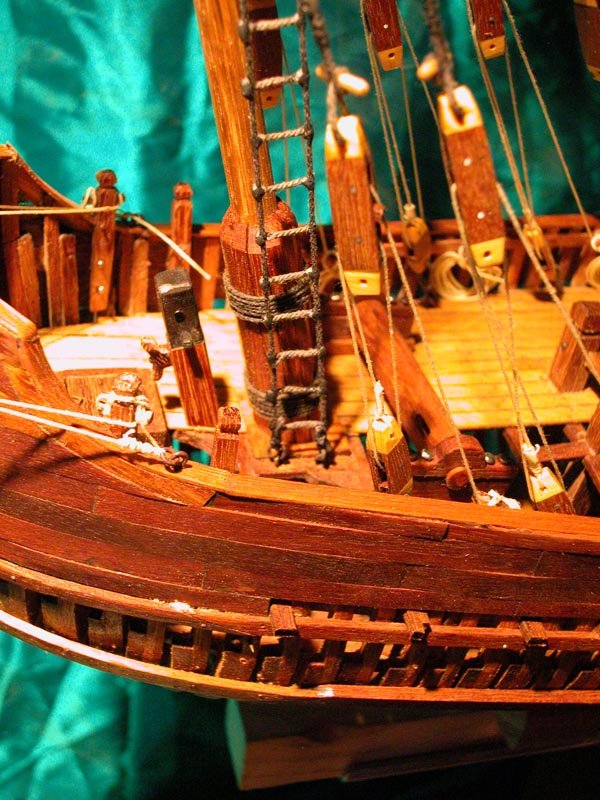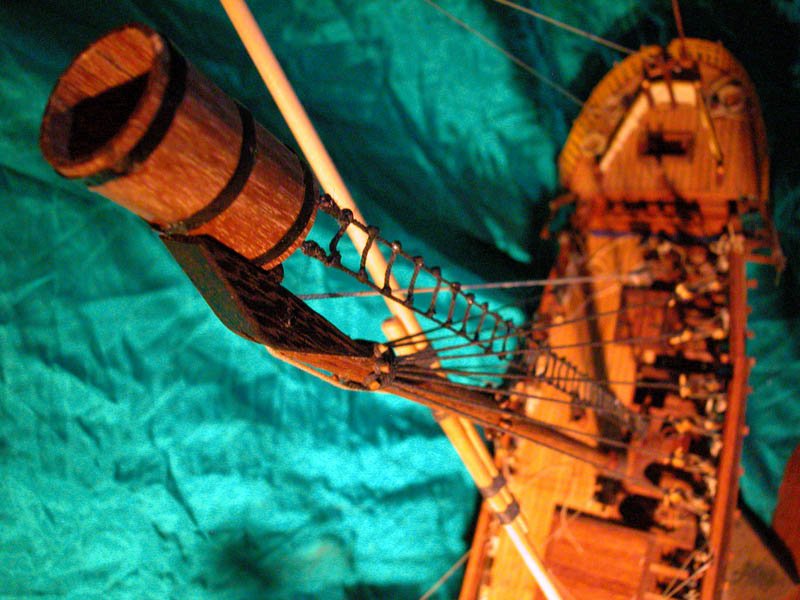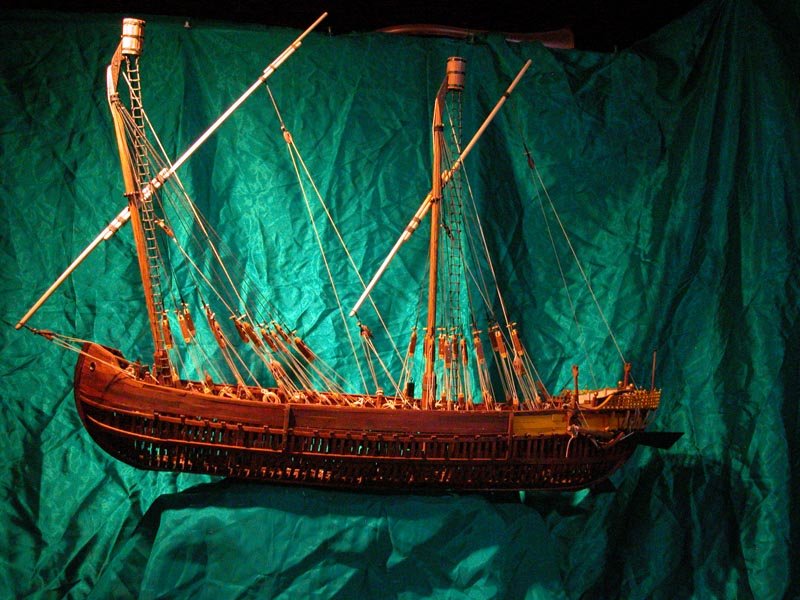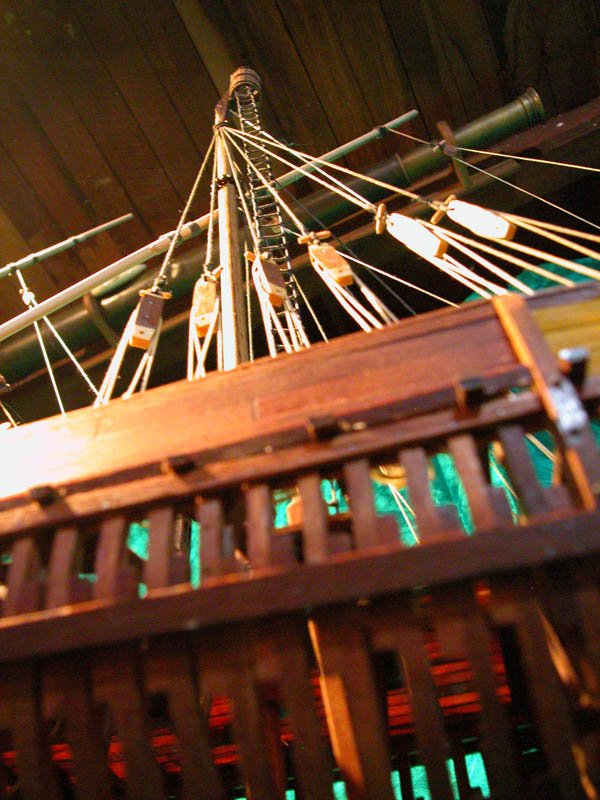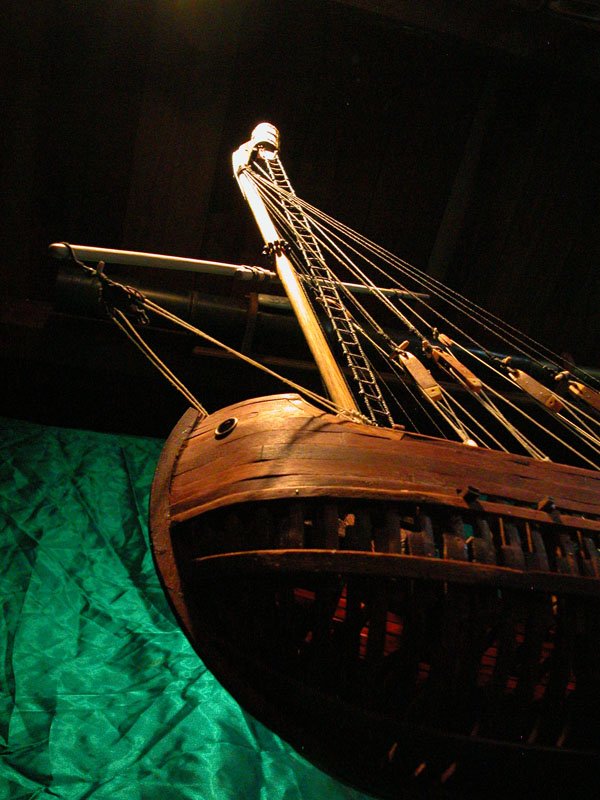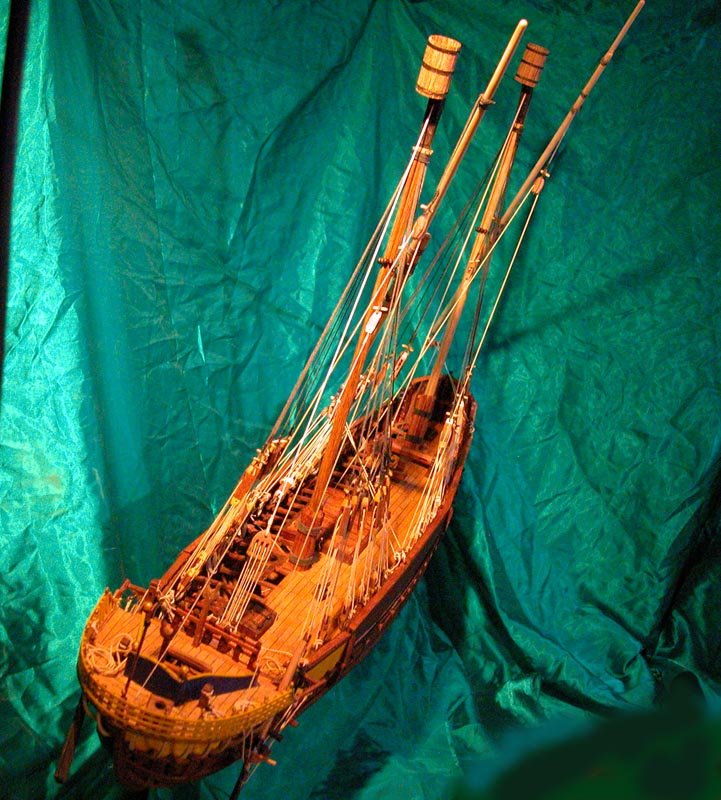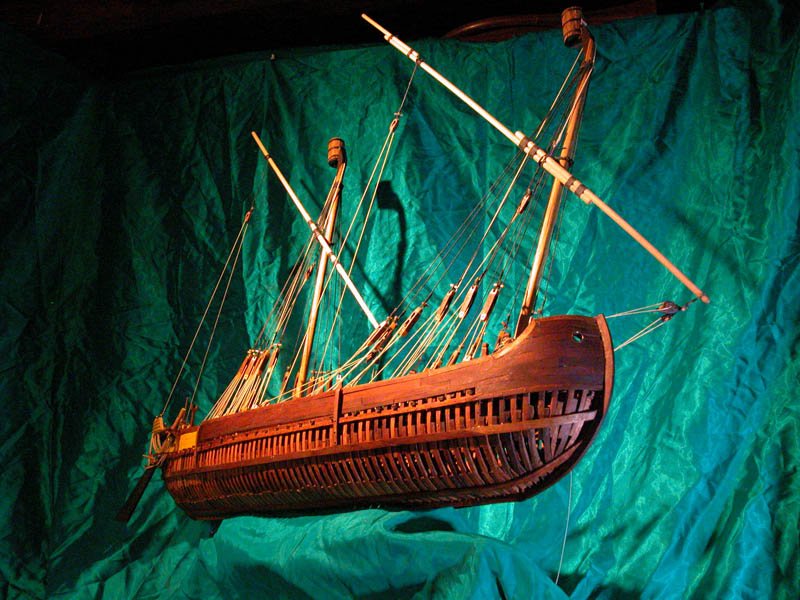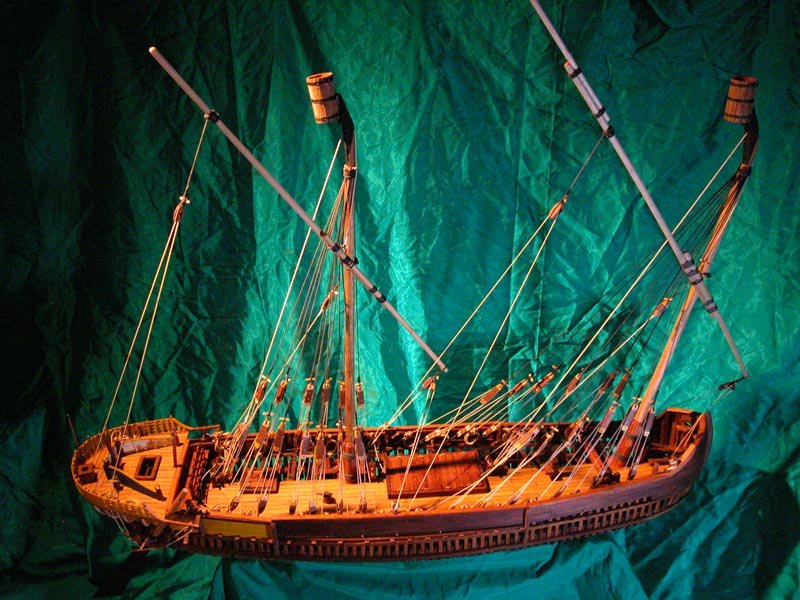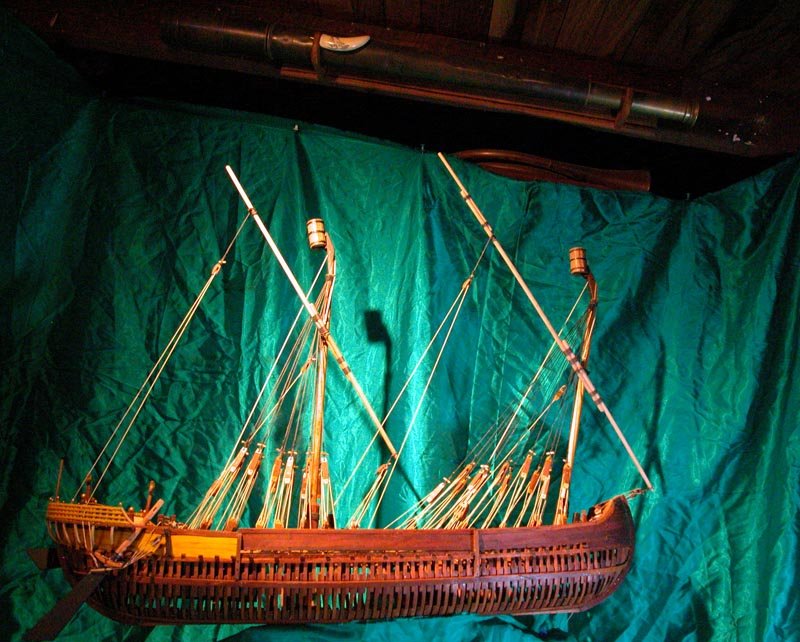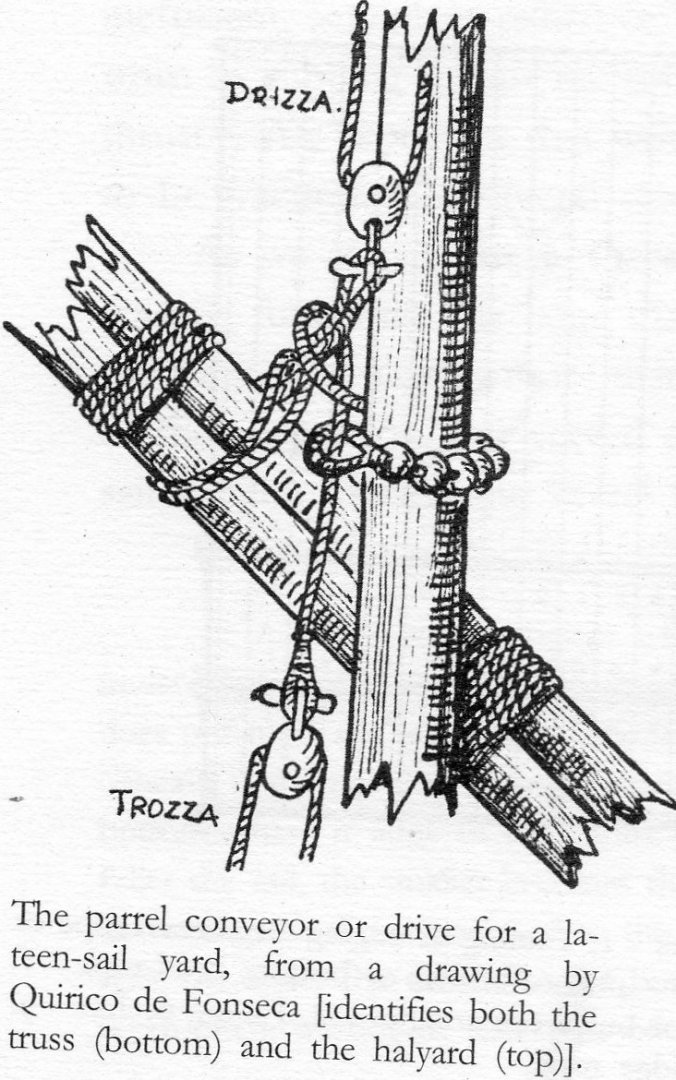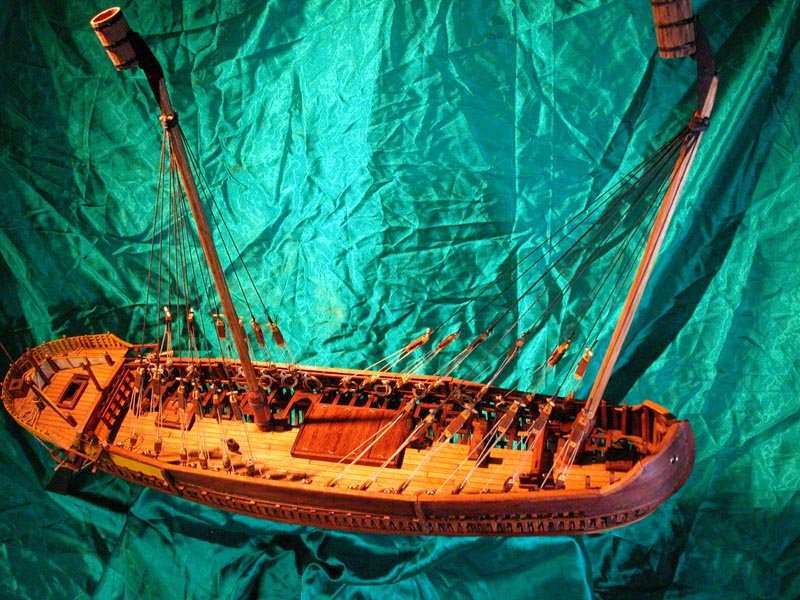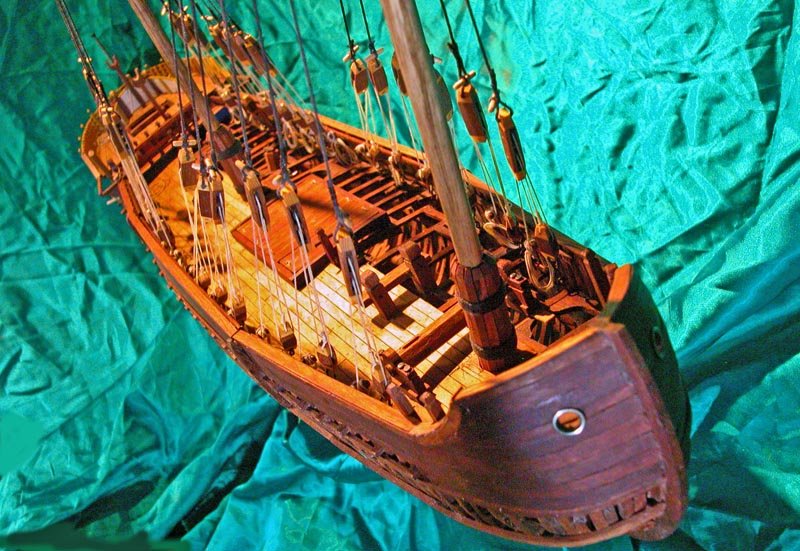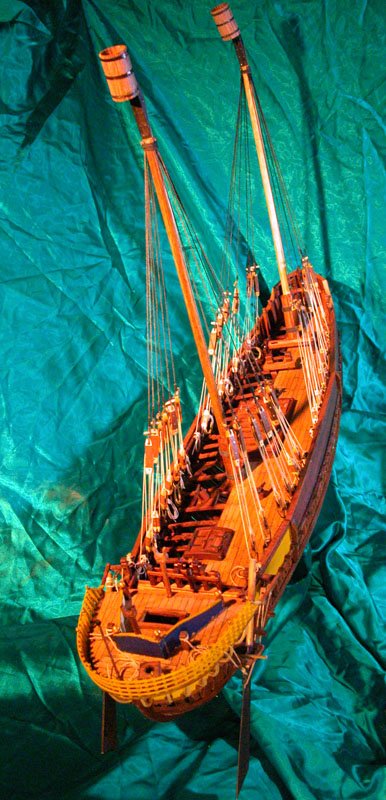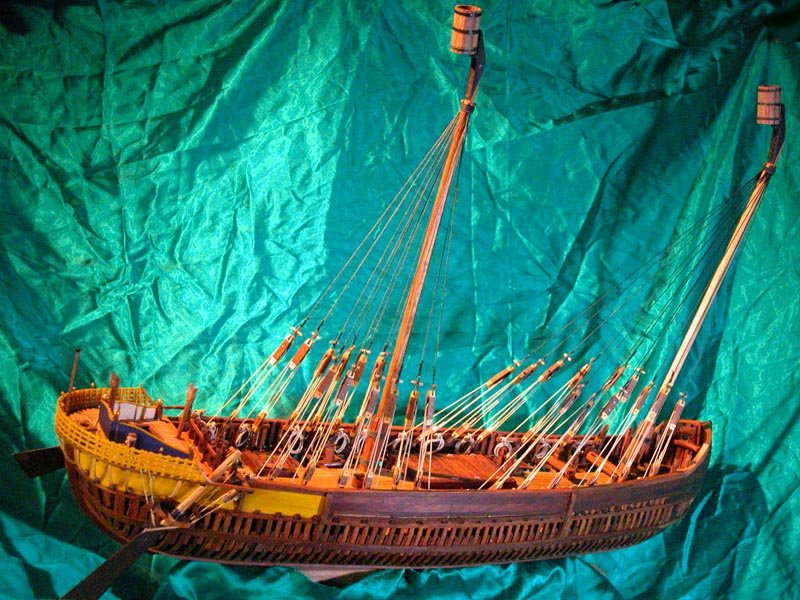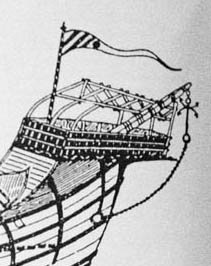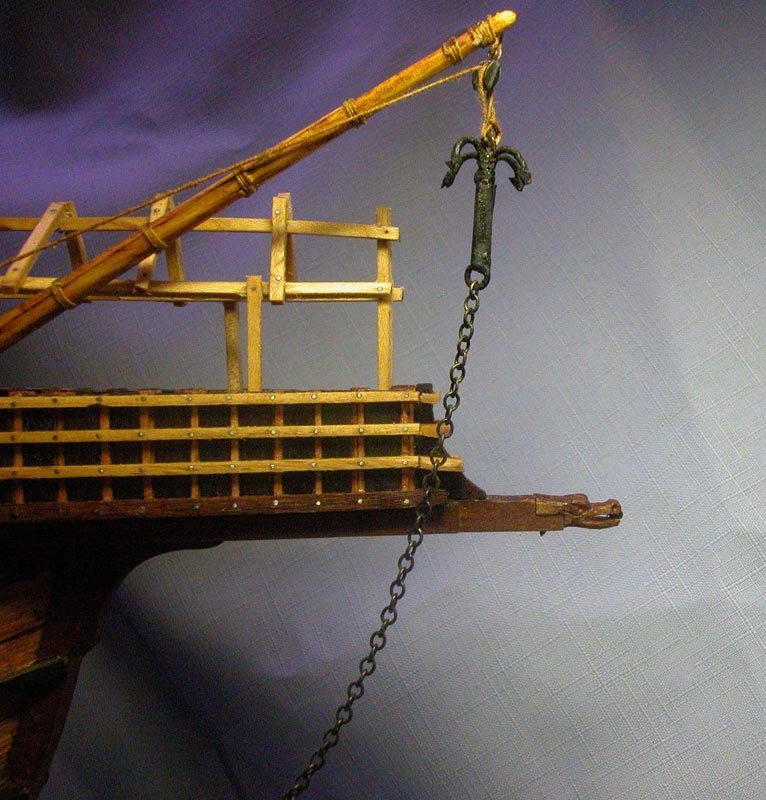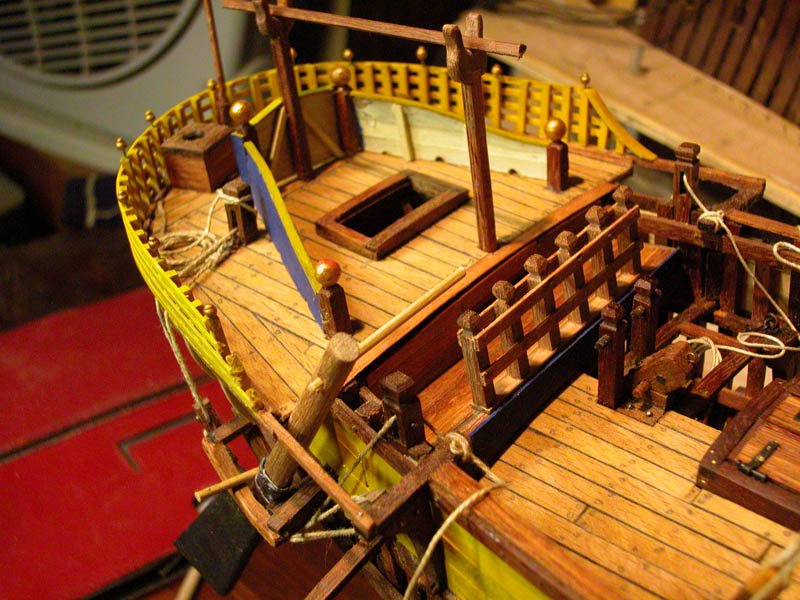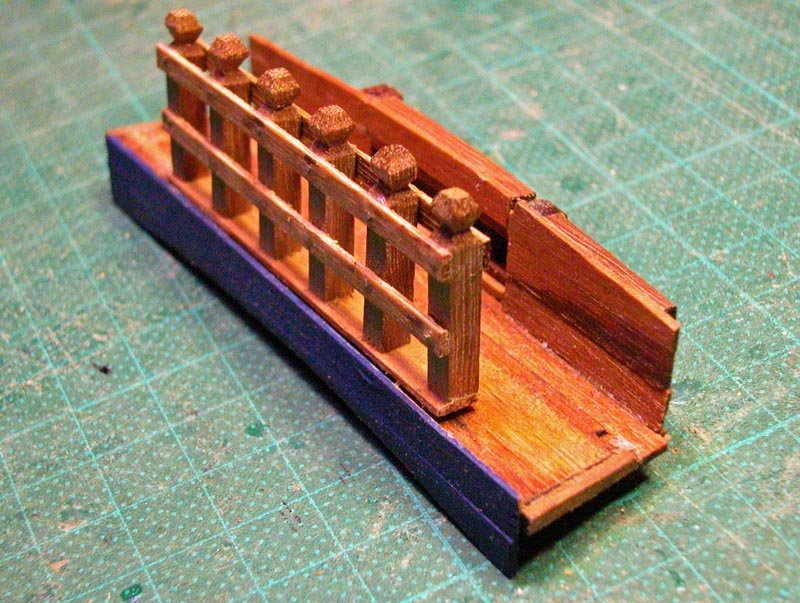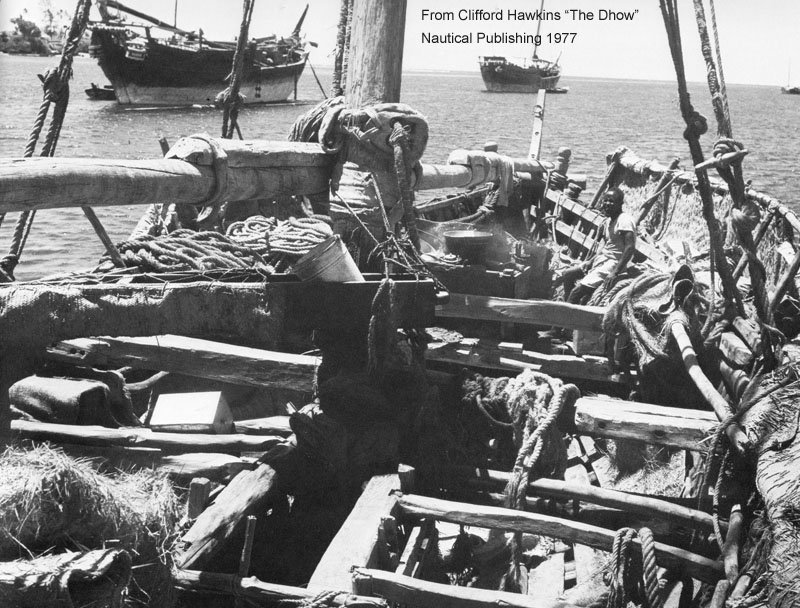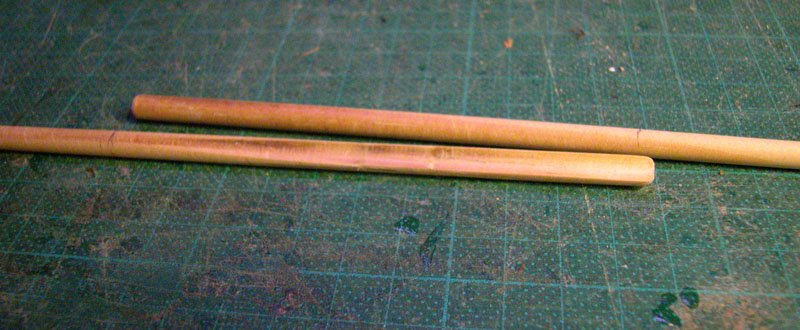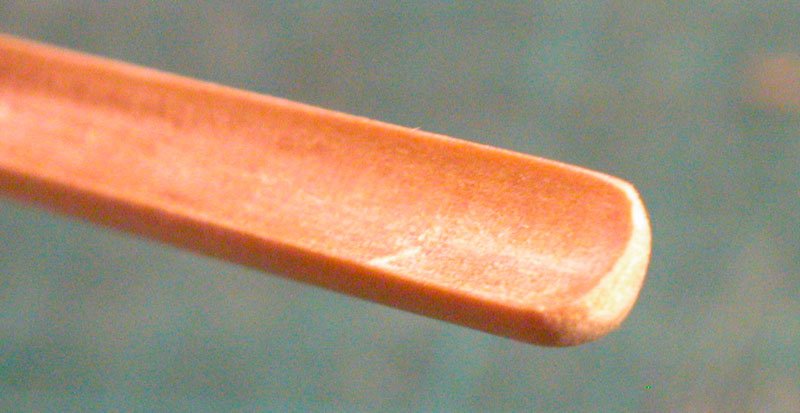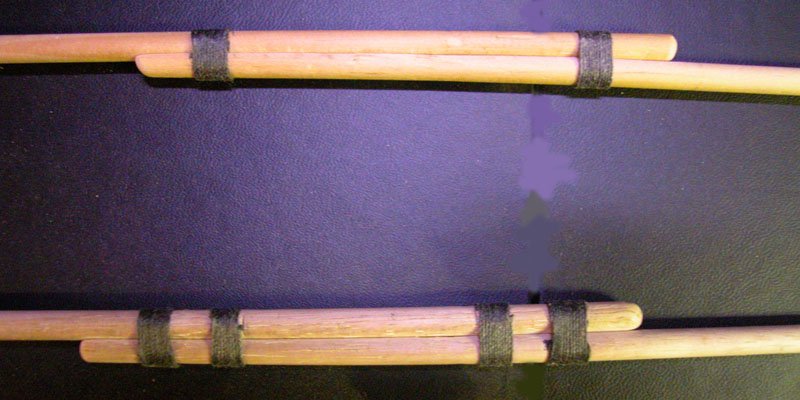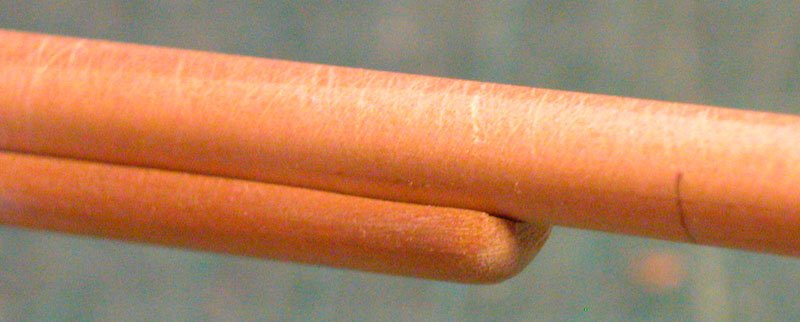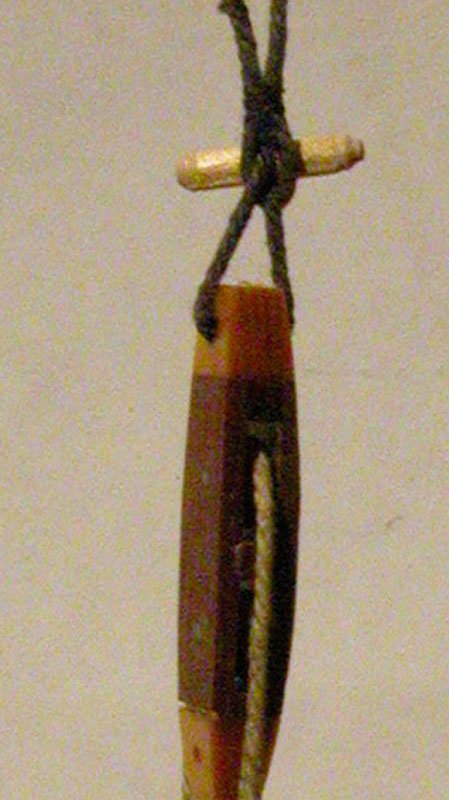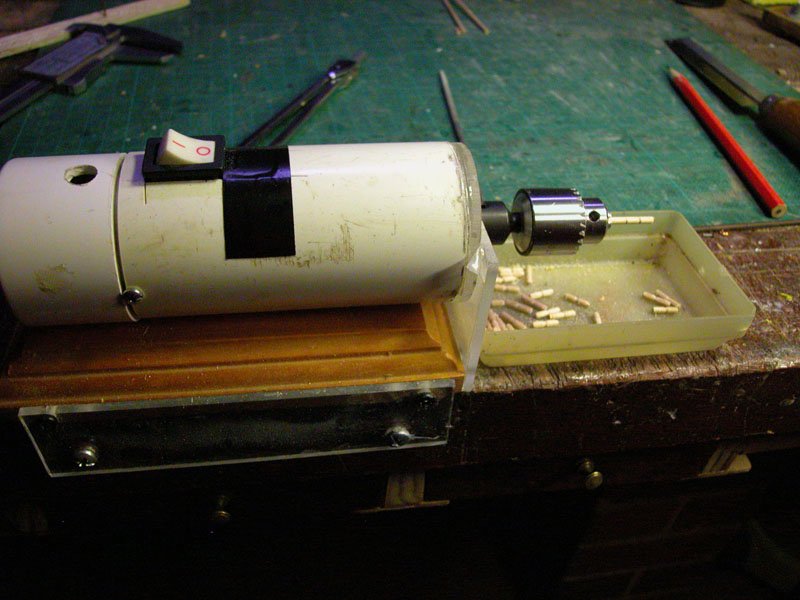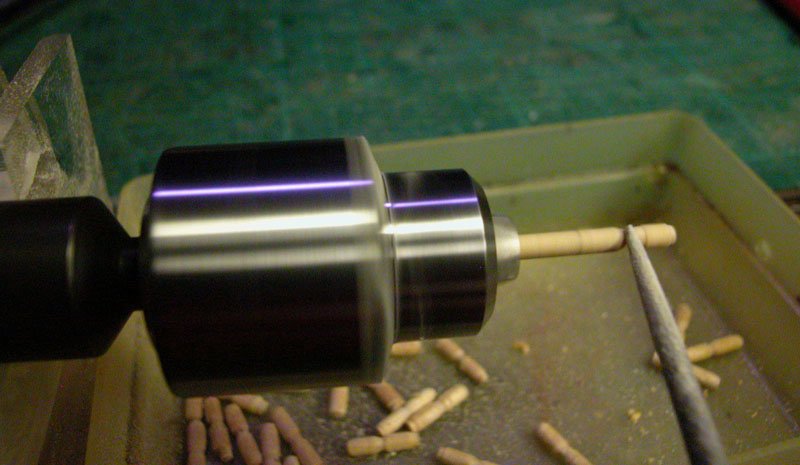-
Posts
834 -
Joined
-
Last visited
Content Type
Profiles
Forums
Gallery
Events
Everything posted by woodrat
-
Thanks, Pat. I wouldn't dream of it. Steven must be going cross-eyed by now. I may have a go myself, though. I think it would have a crew of 2. Dick
-
I applaud your choice of subject and have something of a penchant for the working mediaeval vessel myself. I am happy to see you are referencing the excavation report. Do not hesitate to contact the archaeologists as they will undoubtedly be keen to assist you. Those trenails seem a little oversized. Does the thesis give information on their diameter. I find Byrnes trenail maker very cheap and easy to use to get accurate diameters of trenails (I use split bamboo to make them). Good luck with your build of a very interesting vessel. Cheers Dick
-
Thanks Vaddoc, Silverman and Hellmuht for your kind suggestions. Framing is now complete. The only metal nails are between keel and frames as in the excavated original. From this point only trenails will be used ( and woodglue). I use bamboo trenails pulled through a Byrnes trenail maker. Cheerio Dick
-
Thanks, Vaddoc. The original vessel, as excavated in the Theodosian harbour of Istanbul, used iron nails in the attachment of frames to keel but the rest of the construction used plank to plank dowels and plank to frame trenails. I have used pins into the keel but the wales are held to the frames with wood glue and 0.5mm. bamboo dowels, which was surprisingly rigid. Where do you get 1mm screws from? The mast leans on the stanchion which is in turn held up by a transverse throughbeam. I think. Dick
-
Thanks, Steven. Some progress on the vessel. The framing is compleat. I have deliberately made the framing a little rough to match the roughly adzed appearance of the original. I think it would look odd if smoothly machined frames were depicted. The mast-step.The larger slot is for the mast and the smaller slot is for a supporting stanchion for the forward sloping mast. The mast-step timber is keyed into the frames. The first and third wales are in place Cheers Dick
-
Further progess on Yenikapi 12 version 3 The backbone in its building board. The aim is to make midship frames and tail frames of correct shape and join everything with ribands to the keel and posts Each frame was made (by the original shipwright) using a floor timber extending up on one side to the level of the gunwale. On the other side, a timber was joined to the floor by an 'L' shaped scarf. The floor was flipped on alternate frames so that the weak scarf was not always on the one side The frames attached to the keel Ribbands have been attached which will guide subsequent frames. Much as the original would have been built. Cheers Dick
-
This the backbone of the vessel at 1/16 scale. length about 57 cm. n note the holes in the keel for ropes that would presumably be used to kedge the vessel to a small grapnel. the keylock scarf joining the keel sections and the posts to the keel. an S-scarf joining the timbers of the posts.. Grey resin was used as a filler in the joins and was still present in the excavated wreck. Dick
-
Thanks Carl. Unfortunately she will have to go live in a glasshouse and graciously make way for her replacement. Thanks, Steven and Druxey for following along as I slowly go back through time. Yes, Mark, the Four Horsemen of the Apocalypse and the Fall of Satan. Appropriate for the times. Cheers, all Dick
- 263 replies
-
- nave tonda
- round ship
-
(and 2 more)
Tagged with:
-
I have decided not to bend sails at this time, although I may reconsider this at a later date. I will have to make a display case for it. Dick
- 263 replies
-
- nave tonda
- round ship
-
(and 2 more)
Tagged with:
-
I think it is possible at a larger scale and the bonus may be that it will be built with edge dowelling as was the original At 1:16 it would be 57 cm in length and 16.5cm in width. Already started on the Fat Belly. Cheers Dick
-
No point at the moment. I have hit a brick wall. Due to the scale selected and the small size of the vessel, it was not possible to join the planks sufficiently rigidly around the form. So, after completing the planking, I removed the shell from the form and, to my consternation, the shell sprang into a narrower configuration due to its elasticity. In the process of correcting this, I destroyed the shell. 😧 So it's literally back to the drawing board. The solution, as I see it, is to do the build at a larger scale To do this I will need lines with greater accuracy in order to build at a scale 1/16 or even larger. In the meantime, perhaps I should do some more work on the Gros Ventre which has been languishing. 😩 Dick
-
Thanks Druxey. It's only a humble family coastal trader but it is right at the point where shell construction changed to skeleton, which makes it interesting. Anyway, my ambition to build the frames individually fell flat on its face👺. The frames were turning out inaccurate with many breakages. So, reluctantly I abandoned this approach and decidec to build it shell-first over a mould. I feel better already. Cheers Dick
-
This shows the building jig with keel and posts The frame supports and some early frames fitted loosely Cheers Dick
-
Having largely finished my build of the 13th century Round ship, I am going back in time to the 9th century. At this time a transition was in play in the Mediterranean away from the shell construction using edge joined planks with pegged mortices to what would become the skeleton type of construction using full active frames. The vessel I wish to construct was positioned in between these techniques in that it had a mixture of shell and skeleton construction used in its construction. In addition , instead of using mortice and tenon technique to edge join the planks, it used an edge dowelling technique. I will utilise the description and reconstruction published by the author: Işıl Özsait-Kocabaş Istanbul University, Department of Conservation of Marine Archaeological Objects, Ordu Cad. Laleli, Fatih, ˙Istanbul, Turkey The International Journal of Nautical Archaeology (2018) 47.2: 357–390 Copyright for images from this publication resides with Istanbul University Yenikapı Shipwrecks Project, I will withold these. I hope to be able to demonstrate the techniques used by the original builder. The dimensions of the vessel are length overall (LOA) 9.24m, beam of 2.64m, and depth of 1.10m. The length-to-beam ratio of the vessel is 3.5:1. The wreck was found in 2007 at the site of the byzantine Theodosian harbour, one of the greatest treasure-troves of nautical archaeology yet discovered. The wreck of YP12 has good preservation of keel, framing and planking sufficient to do a viable reconstruction. The keel is rockered, that is slightly curved, and made from three pieces joined by keyhole scarfs The stempost and sternpost did not survive and have been reconstructed. I have temporarily installed the spine of the vessels on posts as I believe the original builder would have done. This may end up becoming the stand of the model. Cheers Dick
-
I have fitted the rope Jacob's ladders for access to the "crow's nests". I have positioned them so that they would not foul the running rigging . This was before ratlines appeared on the shrouds, at least in the Mediterranean. Cheers Dick
- 263 replies
-
- nave tonda
- round ship
-
(and 2 more)
Tagged with:
-
Mark, there were no reef points in these vessels. It was either furled or unfurled I have thought a lot on this, the yard (peciae antennarum) consists of two parts the upper portion or penna and the lower or carra. From my reading, the carra is always shorter than the penna. This is, I believe, to facilitate tacking or wearing during which the end of the carra must pass in FRONT of the mast base and so, if the carra is too long (equal in length to the penna), this manoeuvre becomes impossible. Hence, it appears that the yard is slung off-centre. The extension to the penna that I have put on to enlarge the sail exaggerates this. The forward mainsail is signicantly larger than the aft mizzen sail. In regard to the sails, I think a quartering breeze would be OK. I dont know about the weight. It would vary according to the size of the vessel but mediaeval blocks tended to be large. Especially the upper halliard blocks. Double blocks were in-line and so look much heavier than they are. Cheers Dick
- 263 replies
-
- nave tonda
- round ship
-
(and 2 more)
Tagged with:
-
Thanks Steven and Carl and all others for the likes. I have largely completed the running rigging and all that now remains is to decide on the sails. Should I leave it with bare yards or bend sails which may obscure a lot of detail in the rigging or maybe not. I have a cunning plan to do the sails in Silkspan to reproduce the bellying of the sails ( see my carrack build for a similar technique). Cheers Dick
- 263 replies
-
- nave tonda
- round ship
-
(and 2 more)
Tagged with:
-
Folks, the standing rigging is complete and ,I hope, is close to what the original looked like. I wasn't sure how neatly mediaeval sailors coiled their ropes but I am sure they were ship-proud like most sailors. Cheers Dick
- 263 replies
-
- nave tonda
- round ship
-
(and 2 more)
Tagged with:
-
It was certainly the venetian practice in the mid 15th century to have a length of chain attached to the anchor as seen in the cocha of Zorzi Trombetta of 1445. So maybe it was also byzantine practice sometimes Dick
-
At the helpful suggestion of prof. Mauro Bondioli, I have changed the quarterdeck rail from neo-classical kitsch to something more in keeping with the era. Dick
- 263 replies
-
- nave tonda
- round ship
-
(and 2 more)
Tagged with:
-
The construction of the main (forward) and mizzen (aft) yards. Each yard was in two pieces the upper yard was the penna and was significantly longer than the lower yard, called the carra (also car, carium : Jal Glossaire nautique). The two pieces were fitted together with a curved recess carved into the penna and the two pieces lashed together. The ensemble was called the peciae antennarum (Pecia = piece + antenna = mast) This type of yard is seen in modern dhows and similar vessels. Cheers Dick
- 263 replies
-
- nave tonda
- round ship
-
(and 2 more)
Tagged with:
-
Just showing the making of the toggles connecting shroud to pendant block. a small round file is quite effective at making these Dick
- 263 replies
-
- nave tonda
- round ship
-
(and 2 more)
Tagged with:
-
Thanks, Tovabe and a Happy New Year. I have now nearly completed an earlier venetian round ship of circa 1300 which may interest you: https://modelshipworld.com/topic/17991-venetian-round-ship-13th-century-by-woodrat-132-scale-fully-framed/ Cheers Dick
About us
Modelshipworld - Advancing Ship Modeling through Research
SSL Secured
Your security is important for us so this Website is SSL-Secured
NRG Mailing Address
Nautical Research Guild
237 South Lincoln Street
Westmont IL, 60559-1917
Model Ship World ® and the MSW logo are Registered Trademarks, and belong to the Nautical Research Guild (United States Patent and Trademark Office: No. 6,929,264 & No. 6,929,274, registered Dec. 20, 2022)
Helpful Links
About the NRG
If you enjoy building ship models that are historically accurate as well as beautiful, then The Nautical Research Guild (NRG) is just right for you.
The Guild is a non-profit educational organization whose mission is to “Advance Ship Modeling Through Research”. We provide support to our members in their efforts to raise the quality of their model ships.
The Nautical Research Guild has published our world-renowned quarterly magazine, The Nautical Research Journal, since 1955. The pages of the Journal are full of articles by accomplished ship modelers who show you how they create those exquisite details on their models, and by maritime historians who show you the correct details to build. The Journal is available in both print and digital editions. Go to the NRG web site (www.thenrg.org) to download a complimentary digital copy of the Journal. The NRG also publishes plan sets, books and compilations of back issues of the Journal and the former Ships in Scale and Model Ship Builder magazines.


